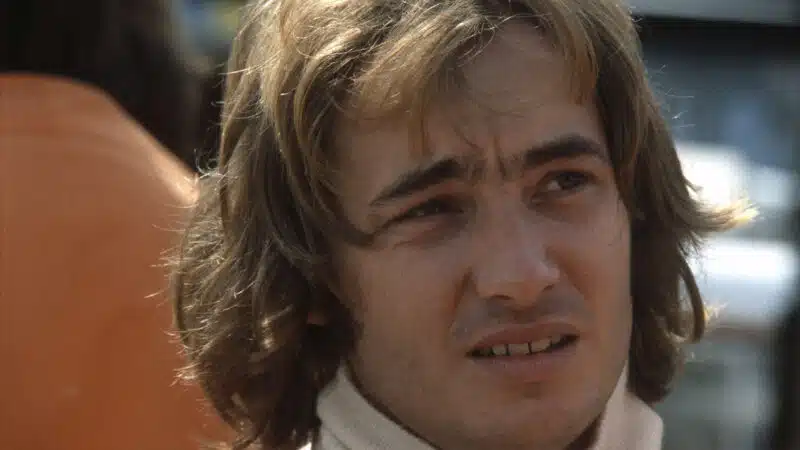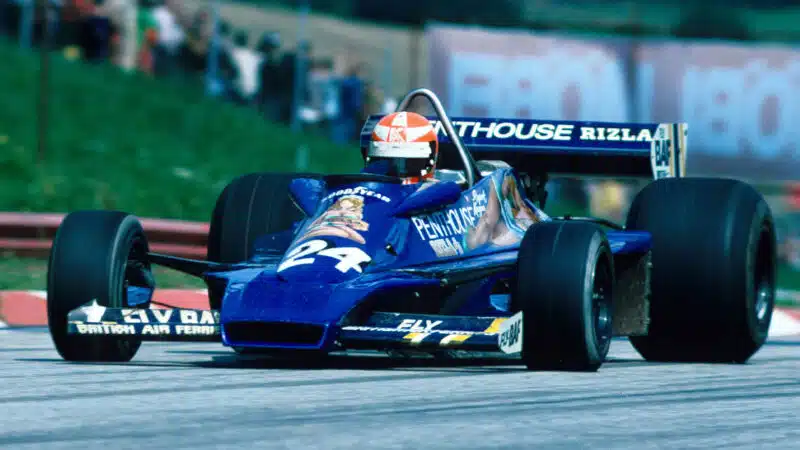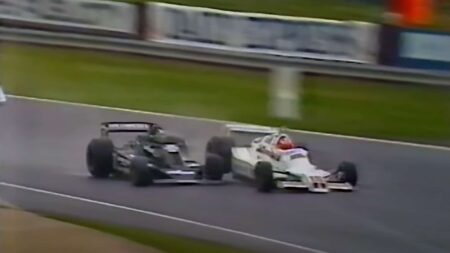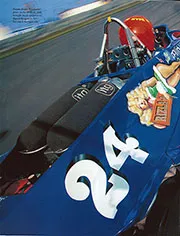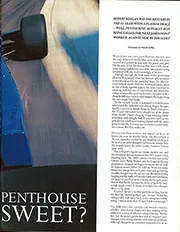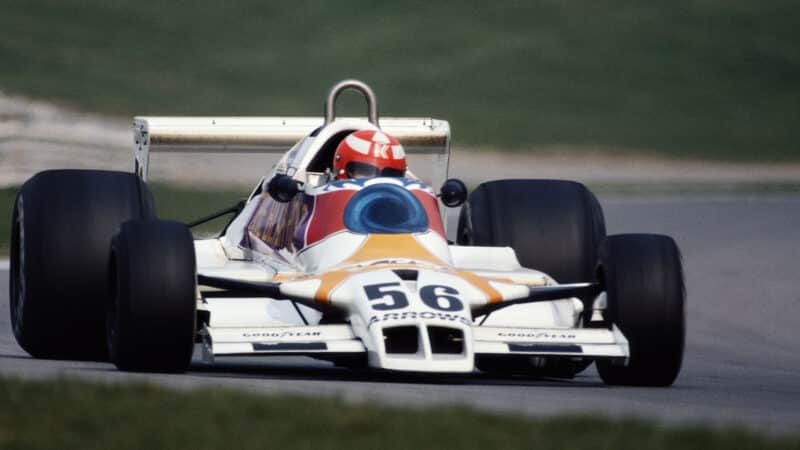For the following year, armed with the latest March 763, he was quick out of the box and spent most of the season battling for the BP Championship lead with factory March driver Bruno Giacomelli. With just a couple of points in hand he tangled with the Italian at the start in the final race at Thruxton and thus took the title. In the other F3 series sponsored by Shellsport, he finished second behind Giacomelli. By then he also competed in a couple of long distance sports car races in a 2-litre Lola and March.
Although he then had a couple of F2 drives, his sights were now firmly set on Formula 1 before a plan for 1977 was hatched, which saw him join Hesketh Racing, now sadly in decline after James Hunt’s departure. With Guy Edwards’ help he pulled together sponsorship from Penthouse magazine and Rizla cigarette roll-up papers. The 308E design by Frank Dernie and Nigel Stroud was re-decked with the image of a Penthouse Pet laying down the side of the car clutching a pack of the roll up papers. At race meetings there were several Pets in their Memphis Belle-style French maid dresses on hand to cheer along Rupert. It started well: in his F1 debut at the Race of Champions, Keegan ran as high as fourth and memorably overtook Jackie Oliver’s Shadow on the outside of paddock before eventually finishing eighth. His world championship rookie year was respectable, he qualified for all the races, had five top ten finishes but retired from the other half of the races after various incidents. The car he raced that year is the same one now taken to so much success in historic F1 races by Michael Lyons.
At the time Rupert was just 21 and it wasn’t all having fun. Later he said “All that Penthouse hype was good for the image but the playboy stuff was exaggerated, we wouldn’t party at race weekends, we’d go to bed early.” His chief mechanic at the time Dave “Beaky” Sims confirmed this, “James was really a party man, Rupert wasn’t like that – and he was fit”.
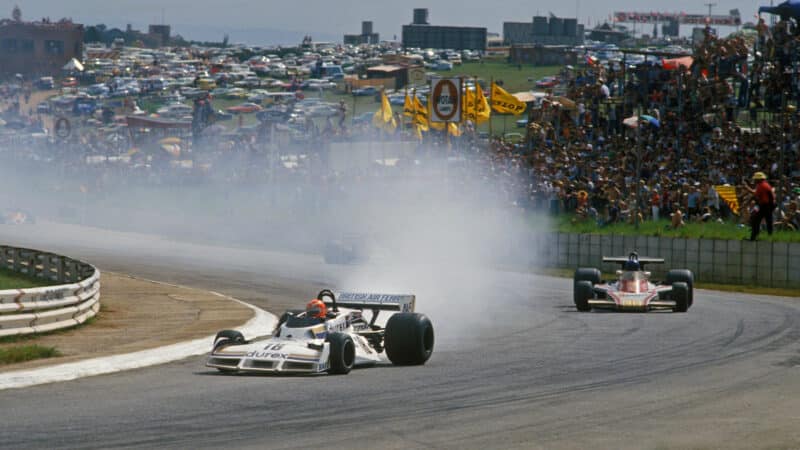
Surtees stint was difficult, as this blown engine at Kyalami demonstrates
Grand Prix Photo
For his second F1 season Rupert moved to Team Surtees, at the time still sponsored by Durex, further adding to Keegan’s hedonistic image. It proved a disaster, he only started in six of the 15 races and never finished inside the top ten. Thus for 1979 the decision was taken to drop down to the then-thriving Aurora AFX British Formula 1 Championship with an Arrows run by the Derbyshire-based Charles Clowes Racing team.
It proved to be a smart move and Keegan was one of the front-runners, starting the final round of the championship at Silverstone in third place behind David Kennedy in a Wolf and Emilio de Villota in a McLaren and with a slim chance of the title. The Spaniard spun and stalled in the race and the next lap Kennedy and Keegan, battling for second place, collided with the Irishman finishing up in the barriers. Keegan then had to finish in second which he duly did in a race won by the late Gordon Smiley. Thus he took the title by two points.
